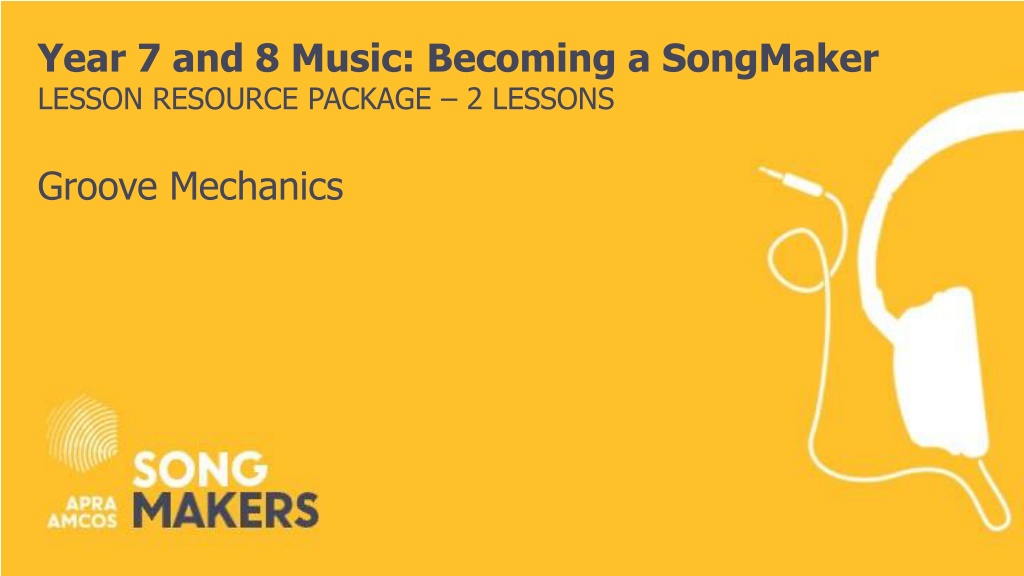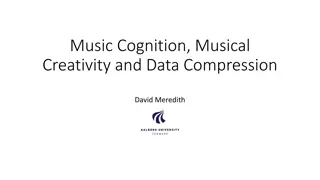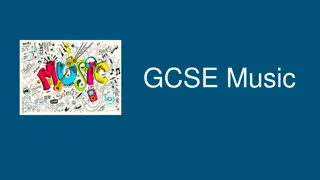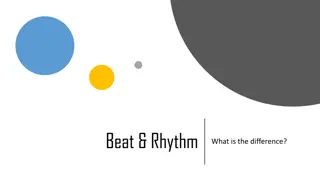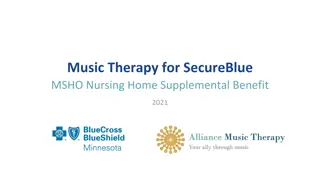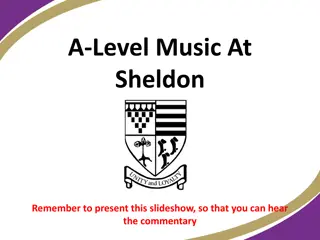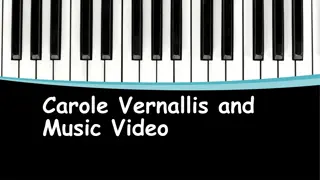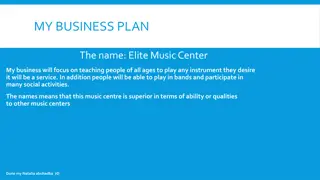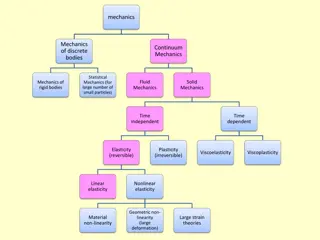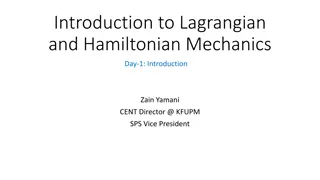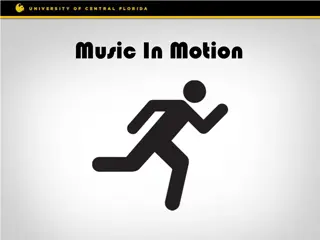Exploring Groove Mechanics and Beat Development in Music Lessons
Delve into the world of beat and groove development with this music lesson resource package for Year 7 and 8 students. Explore terminology, experiment with drum set components, create beat patterns, and understand the importance of pulse, rhythm, and accent in music. Uncover the science of our attraction to good beats and learn about time signatures like 4/4. Engage in class discussions and practical activities to enhance musical creativity and understanding.
Download Presentation

Please find below an Image/Link to download the presentation.
The content on the website is provided AS IS for your information and personal use only. It may not be sold, licensed, or shared on other websites without obtaining consent from the author. Download presentation by click this link. If you encounter any issues during the download, it is possible that the publisher has removed the file from their server.
E N D
Presentation Transcript
Year 7 and 8 Music: Becoming a SongMaker LESSON RESOURCE PACKAGE 2 LESSONS Groove Mechanics
Lesson One Find your groove
Learning Intention: To investigate and discuss common terminology associated with developing beat and groove. To investigate and discuss the basic components of a drum set. To experiment and improvise beat patterns over a 4/4 (simple) metre. To develop and notate beat patterns within a beat grid, in notebooks or in a digital audio workstation (DAW). Success Criteria: I can recall and define common terminology associated with the development of beat and groove in popular music. I can demonstrate the use of a drum kit by creating a groove pattern with the hi-hat, bass drum and snare drum. I can experiment and improvise a beat pattern within a group over a 4/4 (simple) metre. I can develop and notate beat patterns within a beat grid, in my notebook or into a digital audio workstation (DAW).
Words of the Day Pulse the pulse is a series of uniformly spaced beats as a scaffolding for the rhythm. Beat the organisation of pulse to create beats to a bar of music (time signature). Accent - an accent is an emphasis, stress, or stronger attack placed on a particular note. Rhythm the organisation of beat and accent over a pulse in the creation of a musical idea. Groove (or ostinato) the recurring arrangement of rhythm and accents to create a pattern or feel . Metre (or time signature) the number and type of beats and accents that are arrangement to create a bar. Drum Set a musical instrument typically responsible for establishing a groove for a band or within a popular song.
Why Do We Love a Good Beat? Here s Triple J s Linda Marigliano sharing the science behind how we are tuned to a good beat CLASS DISCUSSION When you listen to music what appeals to you instantly? Do you like music with a strong beat and how does it make you feel? *watch to 5:00 triple j. (2018, July 30). Why do we love a good beat? | What is Music. YouTube. Retrieved January 7, 2023, from https://www.youtube.com/watch?v=Xe6zaGk1T3g
What is Metre (Time Signature) For this activity we will be working through a 4/4 or simple quadruple metre. Another term for metre in music is time signature (below): Each quaver beat is divided across the bar into one eighth note (1/8 note) Each crotchet beat is divided into one quarter note (1/4 note) This is therefore how we can interpret the 4/4 time signature
Starting with the Beat Here s Triple J s Linda Marigliano and Dan Goldings working with producer Simon Cohen to create a beat pattern as they starting writing a song. CLASS DISCUSSION Why is it important to get started with a beat (or groove) when we start putting together song ideas? How were the beats created in this example? *watch to 4:00 triple j. (2018, August 28). How do you write a hit song? | What is Music. YouTube. Retrieved January 7, 2023, from https://www.youtube.com/watch?v=iIBMi8LrkOM
Making your own Beat The easiest method of creating your own one-bar 4/4 beat is to divide the beat across a grid. Can you draw in a one-bar rhythmic pattern into the grid below and clap your rhythm? 1 2 3 4 Beat 1/4 note 1/8 note Rhythm
The Basics of the Drum Set The Drum Set is broken into 5 pieces as shown below. For the purpose of working with basic grooves we start by working with the kick drum, snare drum and hi-hat. Bache, B. (2021, May 19). Beginner Drum Kit: Setting up the Drum Kit. Liberty Park Music. https://www.libertyparkmusic.com/setting-up-drum-kit/
The Basic Rock Beat Here is an example of the basic rock beat divided across the Kick Drum, Snare Drum and Hi-Hat. As you can see the Kick Drum accents beats 1 and 3 and the Snare Drum accents beats 2 and 4.
Expanding to a Drum Set Now you can expand your rhythmic ideas to the three basic instruments within the drum set. Can you add two extra parts to your beat pattern into the grid below? 1 2 3 4 Beat 1/4 note 1/8 note Hi-Hat Snare Kick Drum
Performing your Groove Finally this lesson you can work in groups to perform the three components of the drum set Make a group of three. Split the three drum set parts across the three members of the group. Try and perform the drum groove you wrote by clapping the parts. When you can do it, try another group members groove or swap parts. Here are some tips: Count in 1, 2, 3, 4 before you start. Take it slow Make sure you re all listening to one another and are moving with the same pulse and tempo.
Lesson Two Beat Making
Learning Intention: To create individual beat patterns over a simple metre as a basis for creating song ideas. To experiment and improvise with various beat patterns over a simple metre to create coherent sections of music as a basis for songwriting. Success Criteria: I can create an individual beat pattern over a simple metre into a grid (on paper or into a DAW) as a basis for creating song ideas. I can experiment, improvise and create coherent beat patterns over a simple metre to create two contrasting grooves.
Words of the Day Tempo the speed of the pulse (measured in beats per minute or BpM). Click Track a pulse that is set to a tempo with an accent on beat one of the bar, enabled through a DAW when recording. Drum Sample a recorded musical idea that can be looped (repeated) to create a basis of a groove. MIDI musical instrument digital interface. A digital musical instrument that is synthesised and can be programmed on a computer.
Enter the Playground We can experiment with beat patterns on a grid online by accessing Ableton s learning music platform The Playground here: https://learningmusic.ableton.com/ the-playground.html ACTIVITY Try experimenting with a 4/4 beat pattern on a grid to create a groove.
Drum Patterns on a Grid When you are working in a DAW (Digital Audio Workstation) like GarageBand, you will need to enter you beats into a grid (or piano roll). Some DAW s are simpler in that the grid is provided to you and most will allow for you to loop drum samples. In GarageBand we will be working with a drum MIDI instrument to start our drum pattern. The following steps below will work through setting up a MIDI drum set so we can produce grooves for our song concept. When we write a drum groove into GarageBand we are creating a pattern that can imply a click track as a basis for us to record and align other parts as we develop a song.
Returning to the Grid Let s return to our patterns from last lesson on the grid. We will convert this grid into GarageBand this lesson so that we can write our own grooves. 1 2 3 4 Beat 1/4 note 1/8 note Hi-Hat Snare Kick Drum
Setting up a MIDI Drum Set Let s return to our patterns from last lesson on the grid. We will convert this grid into GarageBand this lesson so that we can write our own grooves. Step 1: Create a new project and select Software Instrument Step 3: Create an empty MIDI region (right click on an empty space) Step 4: Click on the green region and you ll get to the piano roll Step 2: Select a Drum Set
Piano Roll When you enter the piano roll mode you can see the bar divided across 4 bears (4/4 metre). From here you can enter in the beats that you wrote into your grid earlier.
Creating a Groove and a Loop Now you can enter the beats and loop the rhythm to create a continuous groove. Add your beats for Bass Drum, Snare Drum, Hi Hat using the pencil tool (hold command and click) Bass Drum C1 Snare Drum E1 Hi Hat G#1 Loop the bar by clicking on the yellow loop button and drag the region to highlight one bar
How do the pros do it? Here s Ninajirachi explaining part of her process in creating a beat. CLASS DISCUSSION How does Nina experiment with sound? How does she find the final beat that she uses? How could you make a beat using her process? Ableton. (2019, July 2). One Thing: Ninajirachi Textured drum layers. YouTube. Retrieved October 13, 2023, from https://www.youtube.com/watch?v=aluQf2jjuLM
Make Your Own Now you can go ahead and experiment with entering your own grooves into GarageBand or Ableton Playground (or your DAW of choice). Create a groove that is unique and try experimenting with different drum set sounds. GarageBand includes some electronic and acoustic drum set sounds and you can hear the timbre of the instrument once you re looping the groove. You could even try moving the piano roll notes to other tones so that you can hear your groove on different instruments within the drum set.
